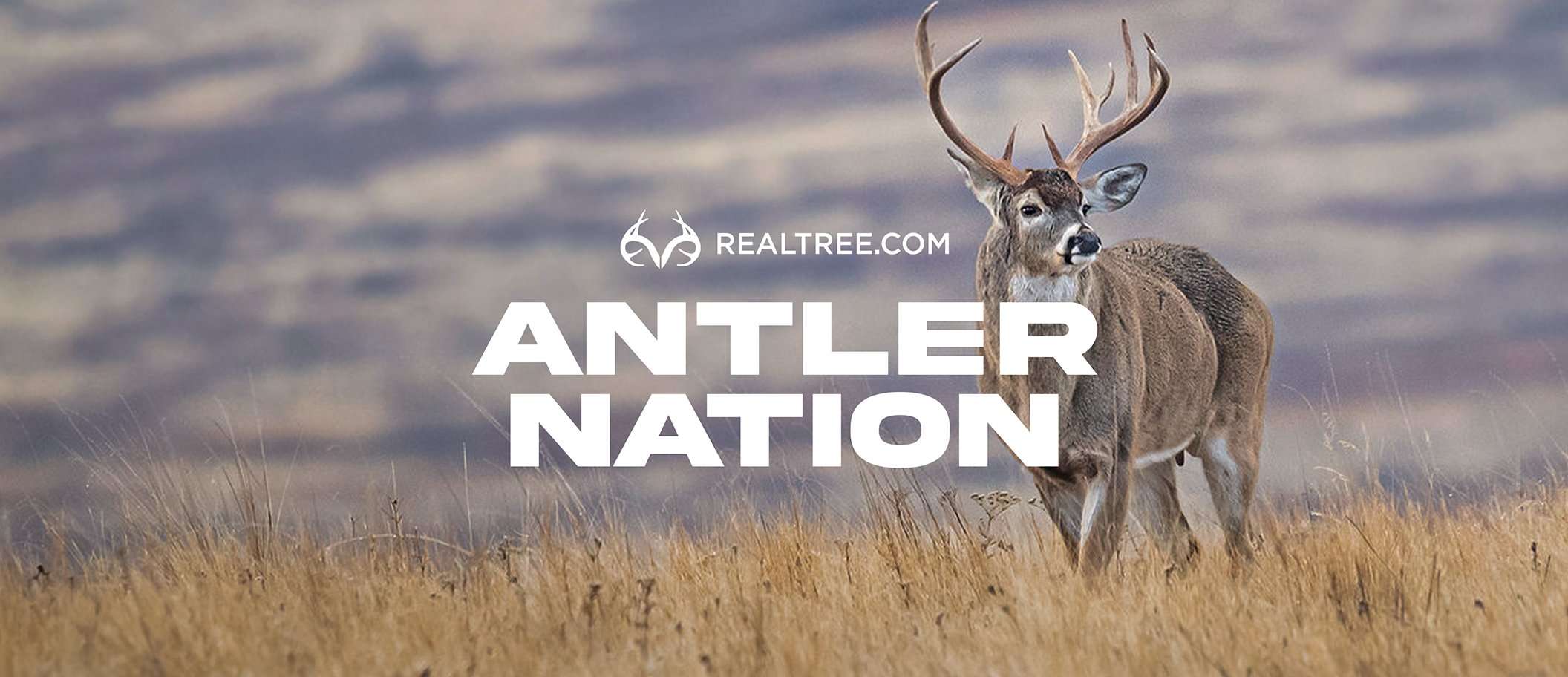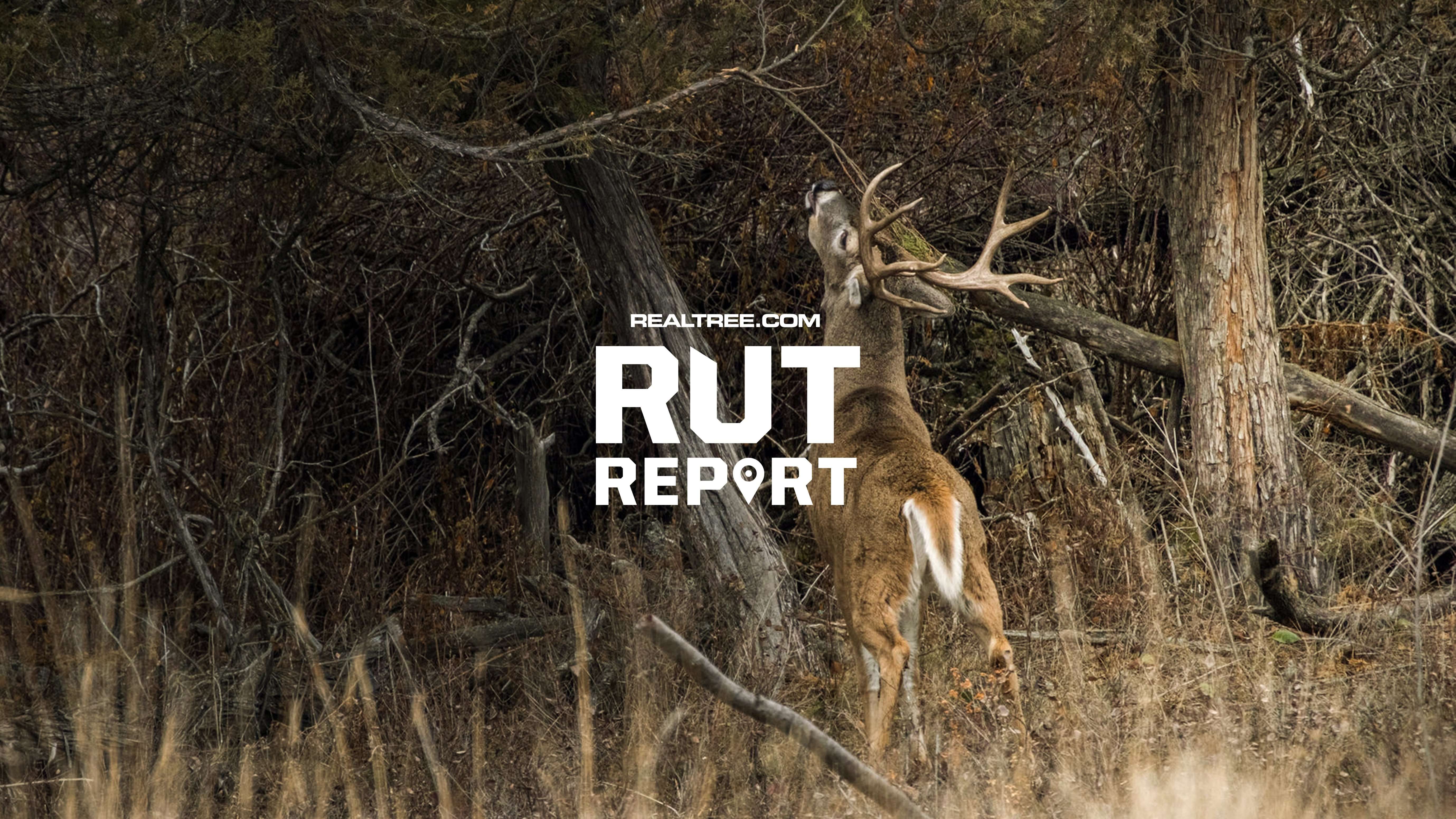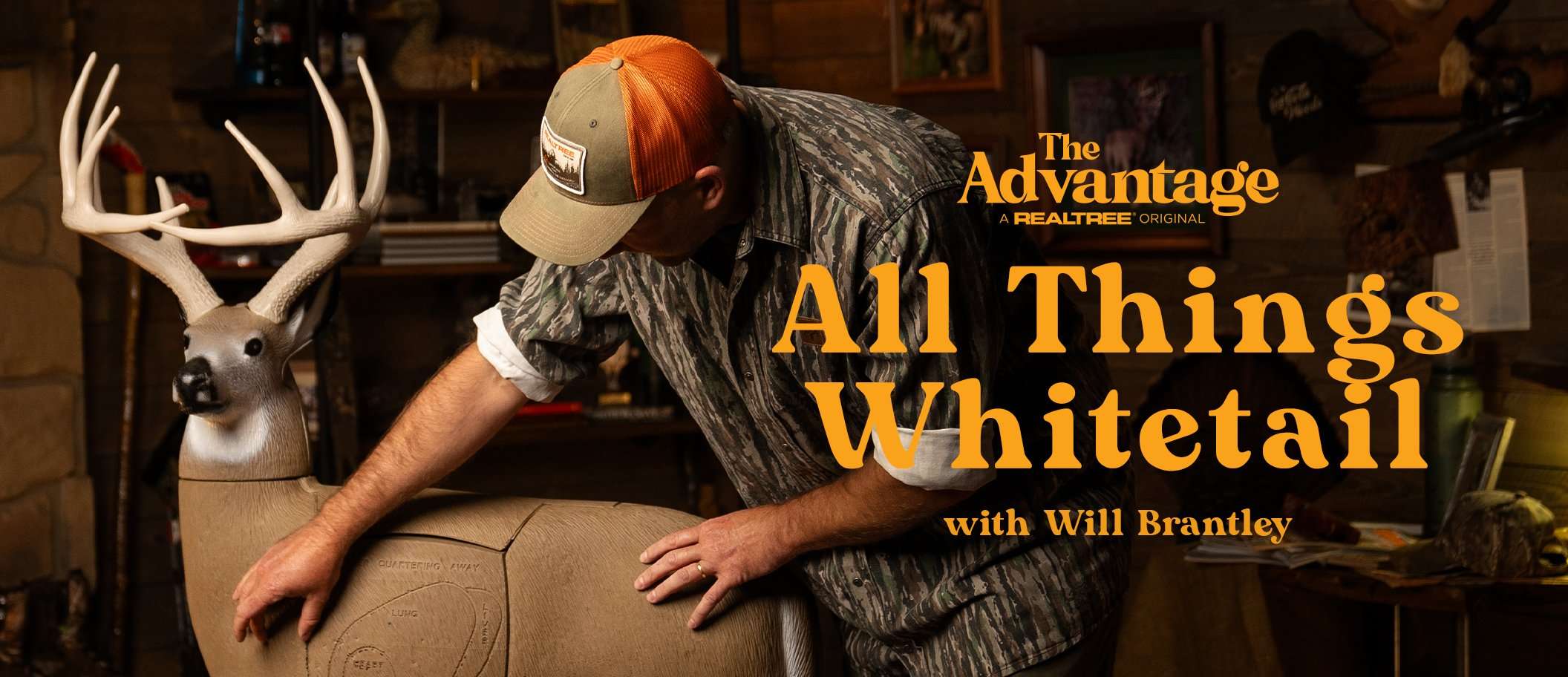Merriam’s, Rio Grande, and hybrid gobblers across the Great Plains behave a bit differently than Easterns in classic timber and agriculture. This advice will give you a leg up during your next open-country hunt
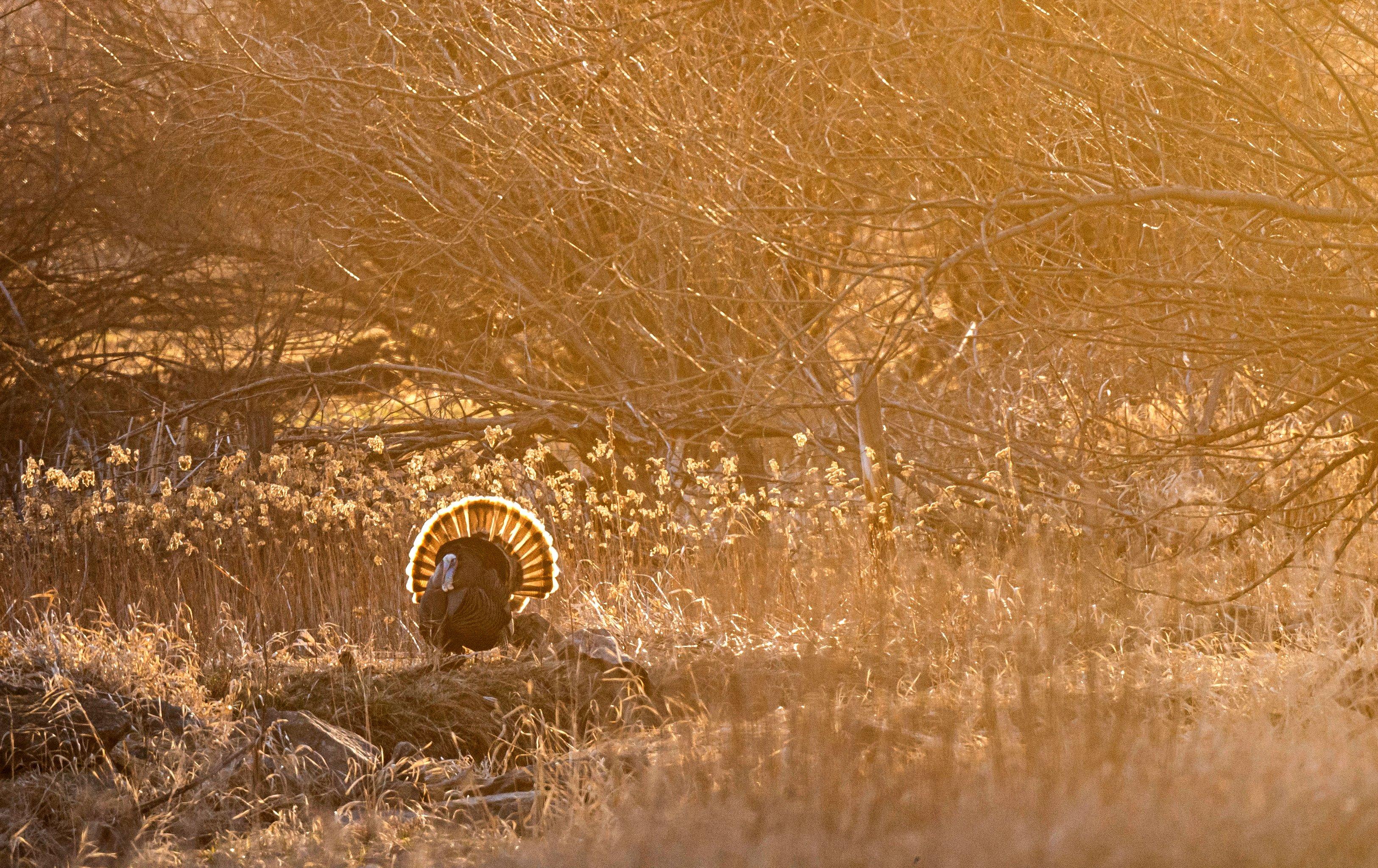
Prairie turkeys make for a fun hunt, but you’ll want to adjust your tactics to their tendencies and the open habitats they roam. Photo by John Hafner.
My wife and I watched a distant gobbler from the road, rolling down our windows and listening to his gobbles. He was a few hundred yards from the road on private land, roughly half of a mile south of a public parcel where we’d hunted at daybreak without hearing anything. At first, the turkey seemed to be forbidden fruit, but the longer we watched and listened, the more he seemed to beeline straight toward the public ground.
Quickly, I drove back to the public ground and parked, then we scuttled about 80 yards off the road with our blind, decoys, and my bow. We popped up our blind, set the decoys, and settled in. We couldn’t have made the maneuver any faster than we did. Shockingly, the bird immediately answered my first yelping sequence; he’d cut the distance almost as fast as we had! I called a couple more times, and he answered. He was coming fast.
Spitting and drumming right outside our blind confirmed that the gobbler was now mere feet away. He popped out and practically filled our blind window as he strutted toward our jake decoy. I drew my bow, waited until he paused, and then delivered a neck hit that yielded fast results.
Don’t Miss: Strut Report: Cool Nights Lead to Sporadic Gobbling in Florida
That was my first prairie turkey ever, years ago, and I learned how different prairie birds can act from the Eastern gobblers I grew up hunting. Since then, I’ve bagged several other prairie birds — some with bows, some with shotguns — in a few different states. Along the way, I’ve learned a few things that you might want to keep in your toolbox the next time you’re hunting gobblers on the prairie.
FIND TREES, FIND TURKEYS
To an Eastern hunter accustomed to big timber, the open spaces of the Dakotas, Nebraska, Kansas, Oklahoma, Colorado, Montana, and Wyoming don’t seem to offer much for wild turkeys. But that seeming void of turkey habitat can actually help you narrow down productive hunting locations.
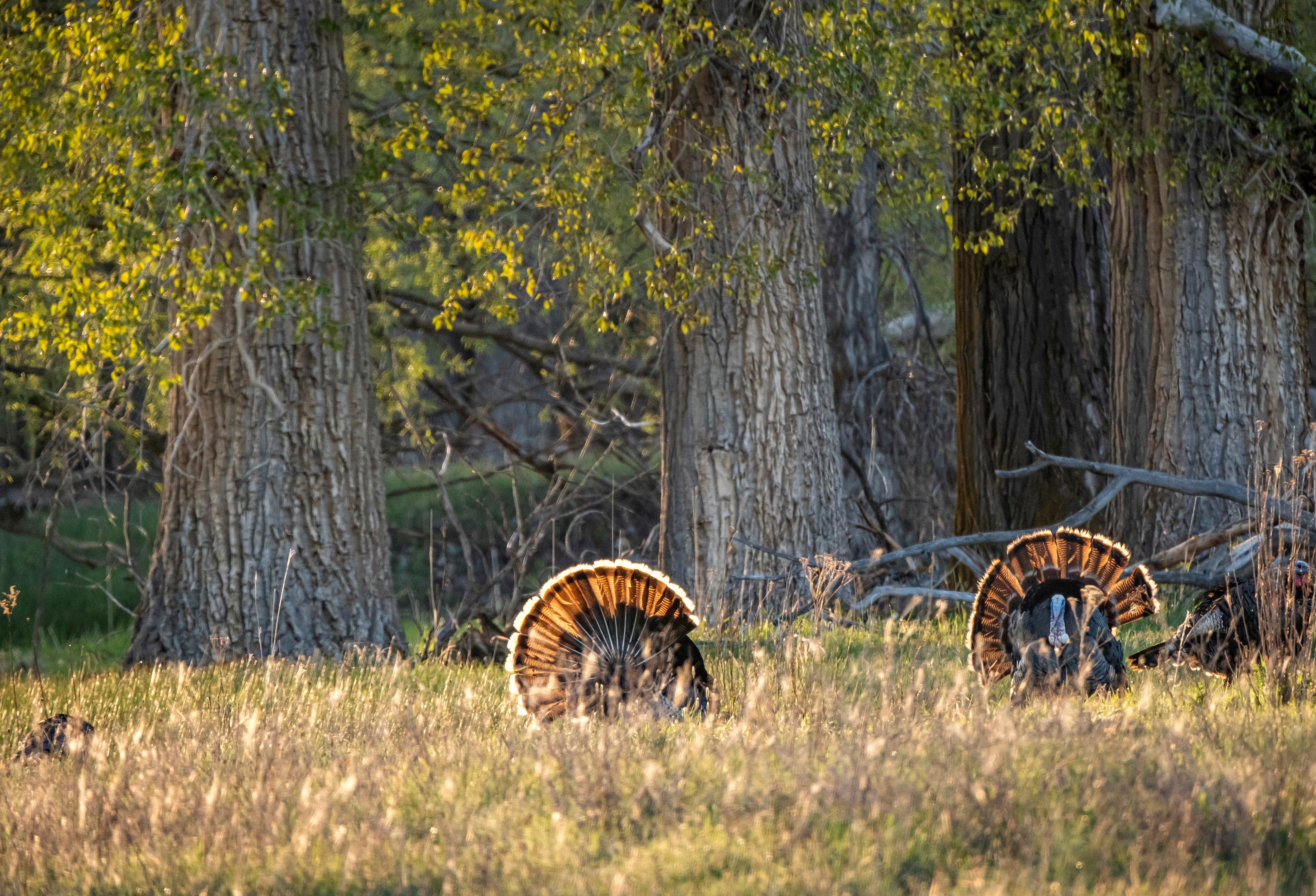
In general, there is less suitable habitat for turkeys in the prairie states than back east. But this can actually make it easier to narrow down good locations. Find the trees, and you’ll often find the birds. Photo by John Hafner.
Tree cover is extremely sparse in most prairie habitats, so the few areas with trees are likely to hold turkeys. Use this to your advantage; focus on areas that do have trees either along riparian areas or in wooded draws tucked into the otherwise open prairies. This will help you to identify potential roosting areas and also sheltered areas where turkeys might be during windy or hot conditions. These aren’t always visible from the road, so be sure to use your mapping app to get a satellite perspective. I personally use HuntStand Pro, but other apps such as onX Hunt work as well.
When you find some trees, either sit at a distance at dawn or dusk and glass. I especially concentrate on cottonwood trees that are dead but still standing. For some reason, prairie turkeys habitually roost in them. Also, keep your ears tuned in, as you might hear a gobble from an unexpected direction. If you can’t scout at first or last light, try to scout during the middle of the day for droppings and feathers to identify prospective roosting sites.
ROUTINES AND OTHER NECESSITIES
During the early season before flocks divide into sub-flocks, many prairie birds focus on feedlots for easy food, especially when the snow hasn’t completely melted. As the soil temperatures rise, green shoots and creepy crawlies emerge, causing birds to disperse. During this period — usually late April through the end of the season — birds will occupy trees during the first and last parts of the day, bug-raid the rolling prairies adjacent to tree cover during the late morning and midday, and spend the hottest hours in or near a cool bottom with a water source. Knowing where birds roost is important, but being attentive to other details, especially while doing your map scouting, will help you understand where birds are likely to be at different times of the day so that you can stay in the hunt.
CALLING AND DECOYS
I’ve had some prairie birds respond immediately to calling and decoys. Once, I even called in a jake and tom from 1,000 yards away (I had ranged the hill they were on when I spotted them). I’ve also had roosted birds within 100 yards that were gobbling like crazy to my calls but flew down and went the other way. I believe a few things influence their responsiveness to calling and decoying.
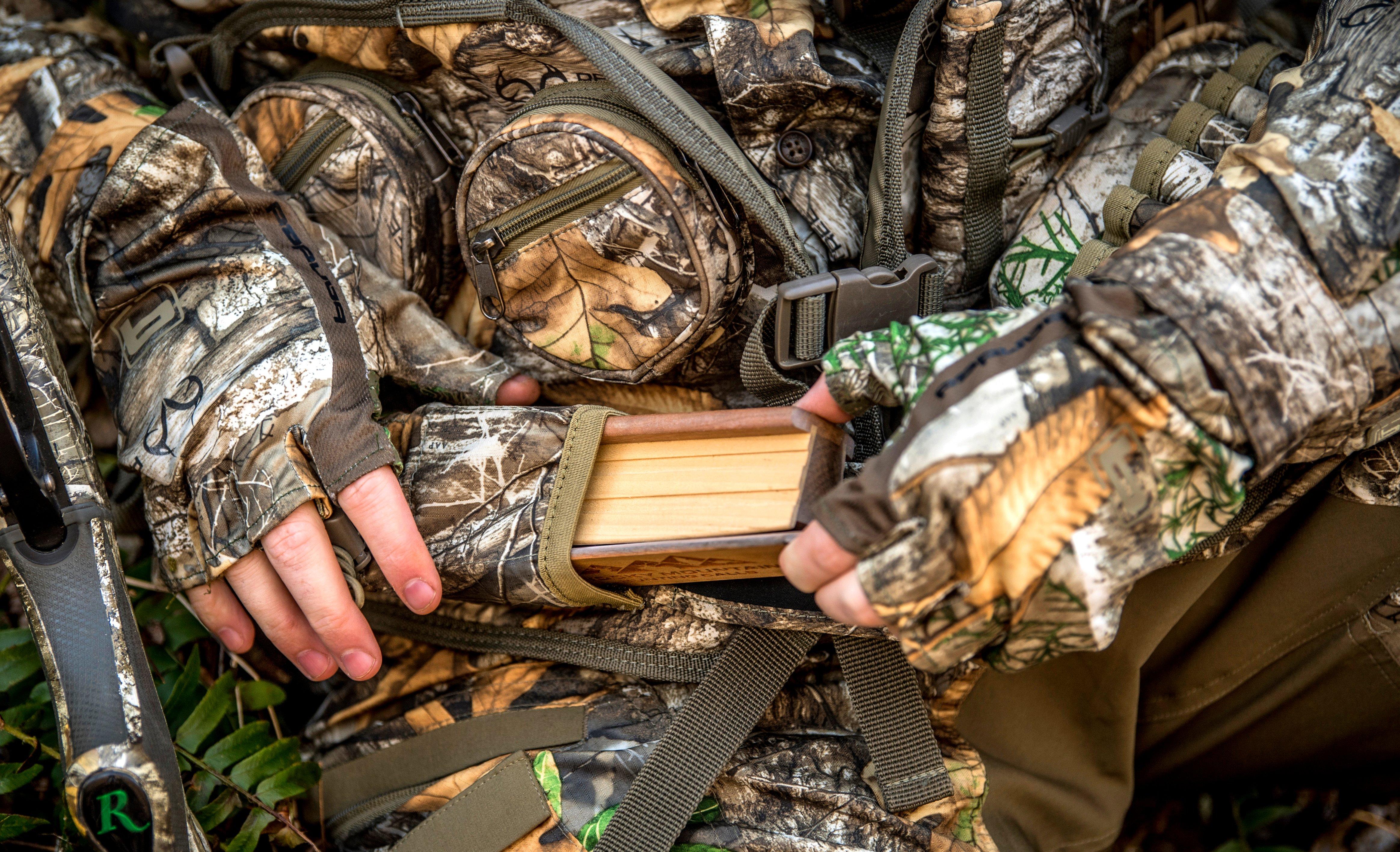
Carry calls that can reach out there. High winds and long distances are commonplace on the prairies. Photo by Bill Konway.
First, I’ve found that Merriam’s, hybrids, and Rio Grandes have set daily routes and routines for most of the season. If you’re not positioned where they’re already going to be, that’s a strike against your calling and decoying efforts. The exception is a satellite gobbler that is out bouncing between flocks and looking for a receptive hen. The other thing is that a gobbler with multiple hens has all of the entertainment it needs; he might gobble at your calls but simply go where his hens lead. You’ll have to adjust your setup and get within their daily route for better results. My best success with calling has been late in the season when fewer hens are out and about but toms are still in the mood.
Check Out Our Latest Camo Pattern: Realtree APX
A couple more calling and decoying tidbits. Pack calls that can reach out there. Some mouth calls have the gusto, but the right box call can be invaluable. I used a box call to pull the aforementioned jake and tom in from 1,000 yards. Also, look to high-frequency crystal pot-and-peg calls. For decoys, I always pair a jake and a hen and make them highly visible. I like to set up on a hill with a commanding view rather than in a tight setup with minimal visibility.
USE THE TERRAIN AND MOVE
If you’ve ever circled around on and bagged an Eastern gobbler that evaded your initial setup, then you know how effective using the terrain to stay in the hunt can be. This is especially true of prairie birds. Rolling prairies complete with thickets, wooded draws, and creek beds often create the perfect layout to stay on a gobbler that circumvented your first setup.
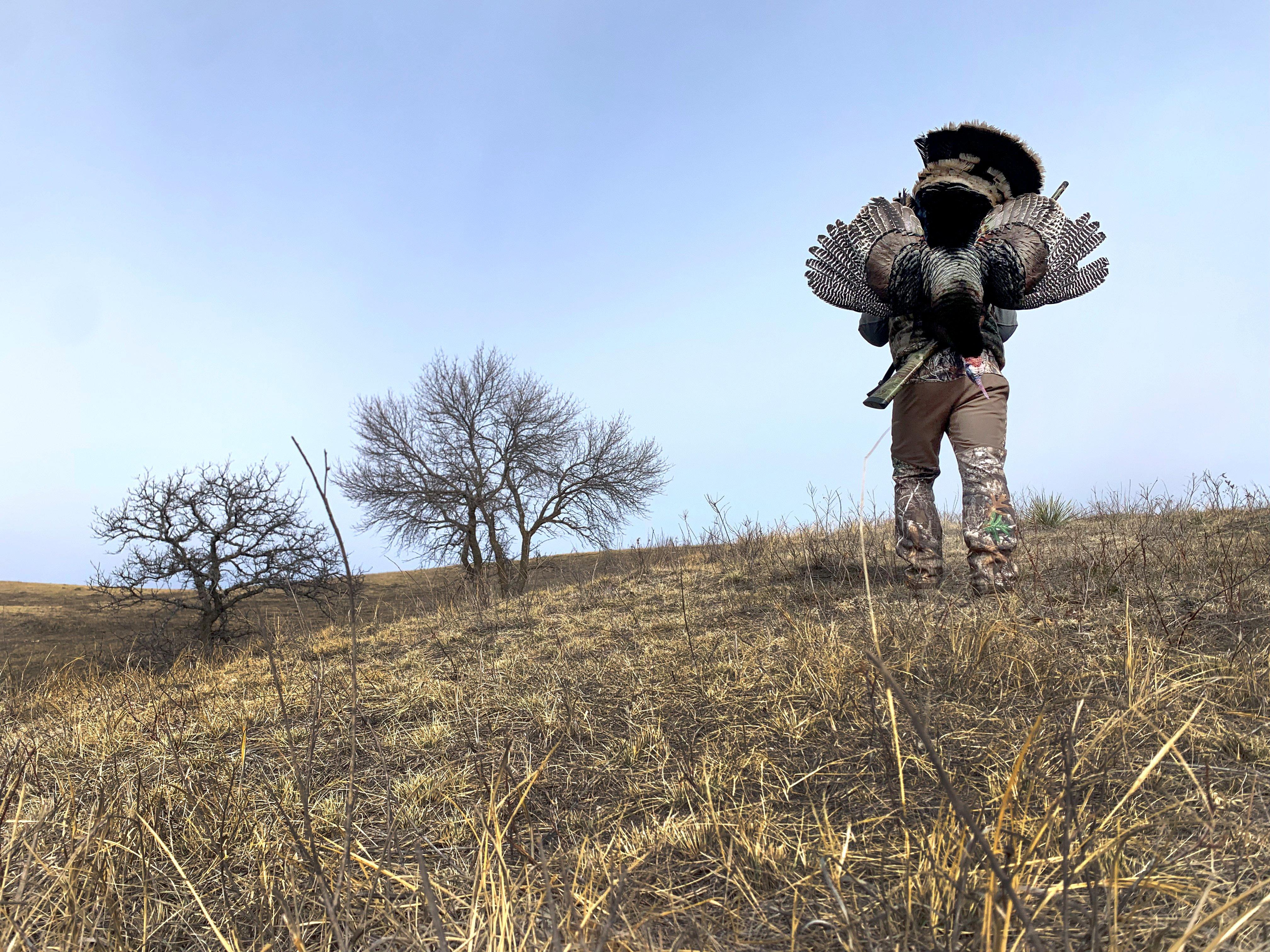
If you’ve successfully used the terrain and cover to move on Eastern turkeys, then you know how effective it can be. Prairie birds are movers, so expect to use this tactic often during a prairie hunt. Photo courtesy of Darron McDougal.
Making moves is easy when you know the property layout like the back of your hand. If I don’t, I open my mapping app and reference the terrain and satellite layers to see where I believe the turkeys are heading and the terrain features I might use to remain hidden as I move. Be prepared to move several times and circle in front of moving birds until you succeed or lose them. And don’t be afraid to be aggressive. When I’ve spent hundreds of dollars on fuel, lodging, and meals, going home empty-handed is a tough pill to swallow. I totally respect any purist turkey hunter who doesn’t want to shoot a gobbler unless it’s coming to the call. But the ride home is better when your tags are filled, and I won’t hesitate to use the terrain to work to within range if that’s what’s required.
A FEW MORE THINGS
Even if you usually hunt from a ground blind, it’s best to leave it in your truck most of the time out on the prairie. One of the few exceptions is when you’re hunting in an area where turkeys fly down in the wide open. A blind is also great when you’re not hunting far from the road. But under most other circumstances, a blind will simply hinder your mobility, and mobility is often a prairie turkey hunter’s most important tool.
Don’t Miss: The Ultimate Turkey Gun Patterning Test
Prairie turkey hunting is practically synonymous with high winds. Think of winds so powerful that turkeys would be wiped right off the hills. High winds are atrocious, but on a five- to seven-day hunt, you can almost count on a windy day or several. Make the best of it. In high winds, try out low-lying riparian areas, especially bends in a river or creek, dry creek beds, or draws that provide birds security from the prevailing winds.
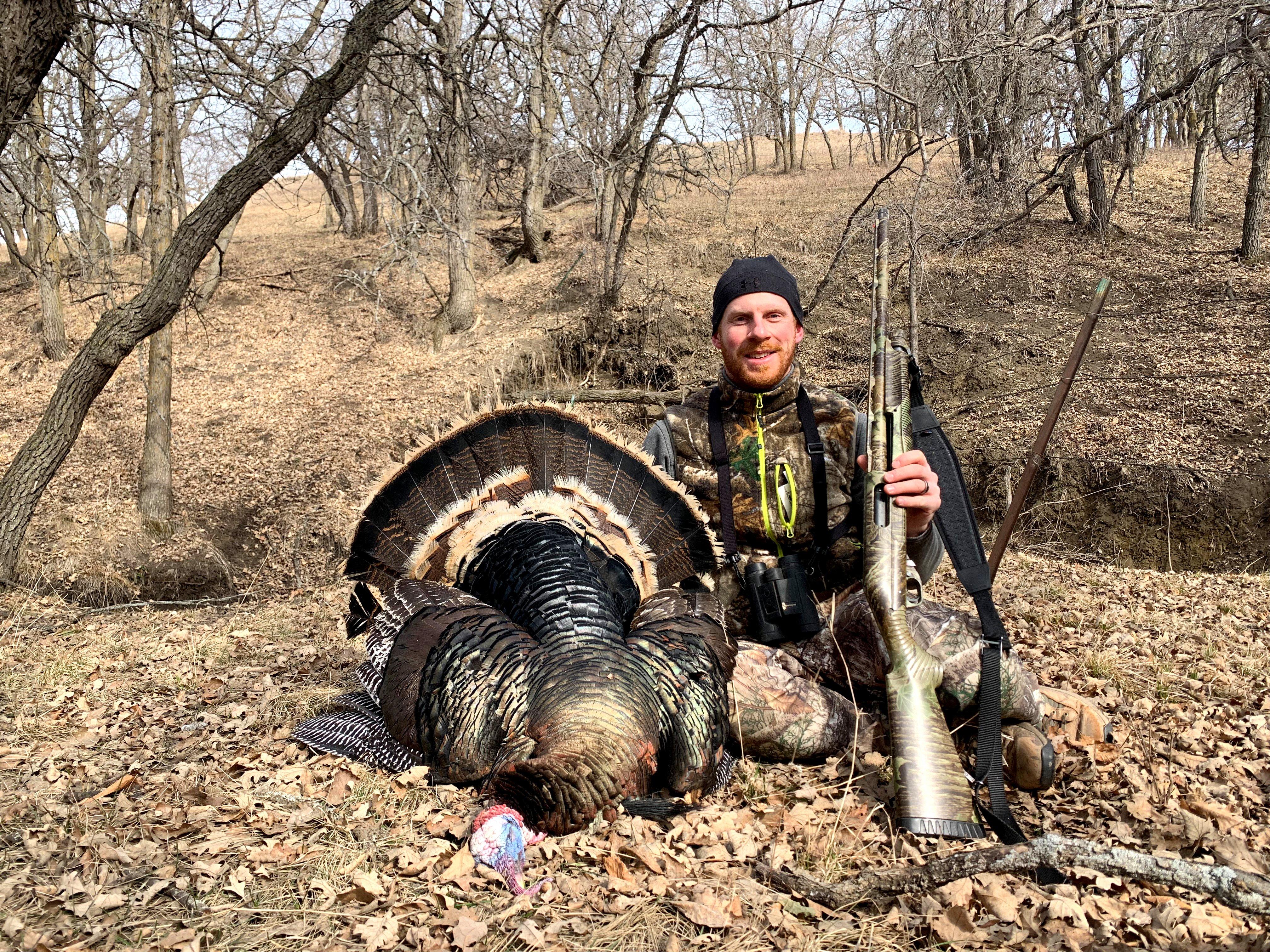
Author Darron McDougal has completed several successful prairie turkey hunts using the tactics outlined in the article. Photo courtesy of Darron McDougal.
Lastly, carry a rangefinder. Judging distances in open country, especially given an inclined or declined shot angle, is difficult if you’re accustomed to classic timbered habitats. The only thing worse than eating your tag is missing a bird or wounding him because you misjudged the yardage.
There’s more to prairie turkey hunting, but these tips and tactics will point you in the right direction for a thrilling and, hopefully, successful hunt.




